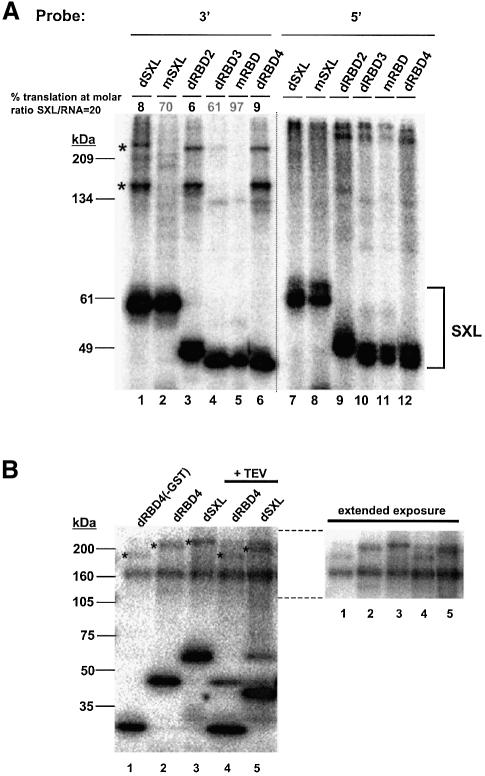Fig. 5. (A) The association of high molecular weight polypeptides with the msl-2 3′UTR correlates tightly with translational repression. 3′ (lanes 1–6) or 5′ (lanes 7–12) RNA probes were incubated in Drosophila translation extracts including recombinant dSXL or SXL derivatives that either repress translation efficiently (dRBD2 and dRBD4) or not (mSXL, dRBD3, mRBD). The ability of each derivative to repress translation is indicated. After UV-crosslinking and immunoprecipitation, proteins present in the pellet were separated in a denaturing 8% acrylamide gel and visualized by autoradiography. Asterisks mark polypeptides of high intensity that specifically co-immunoprecipitate with dSXL (see also Figure 4). (B) The slow mobility band (∼215 kDa) contains SXL. dRBD4 lacking GST (lane 1), or dRBD4 and dSXL (both containing a GST tag, lanes 2 and 3) were incubated in Drosophila translation extracts containing 3′ RNA probe. In lanes 4 and 5, the sample was treated with TEV protease after UV-crosslinking and immunoprecipitation. Proteins were separated in a 6–15% acrylamide gel and visualized by autoradiography. The right panel shows an extended exposure of the upper portion of the gel shown on the left after adjustment of brightness and contrast to reduce background noise.

An official website of the United States government
Here's how you know
Official websites use .gov
A
.gov website belongs to an official
government organization in the United States.
Secure .gov websites use HTTPS
A lock (
) or https:// means you've safely
connected to the .gov website. Share sensitive
information only on official, secure websites.
